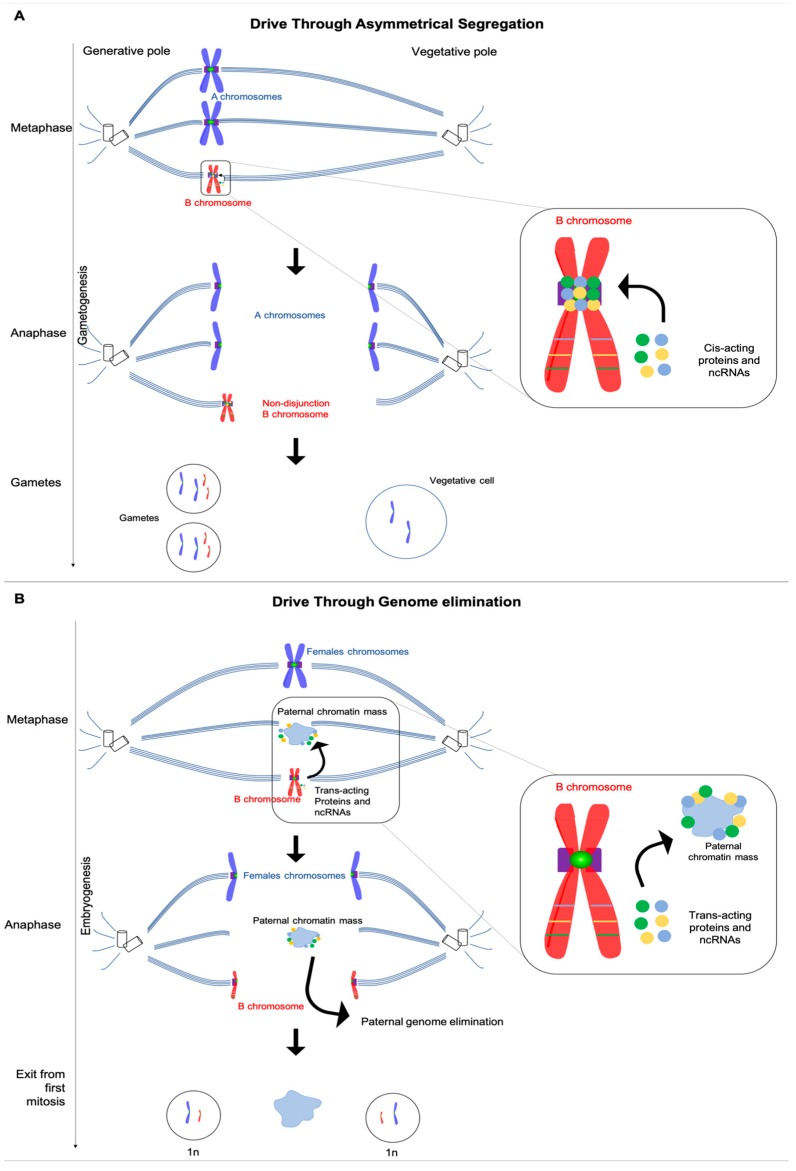Figure 1.
Possible roles for B-expressed sequences in B drive. (a) B chromosome drive through asymmetrical segregation and non-disjunction could involve cis-acting B specific products (proteins or ncRNAs) that retard release of the two sister chromatids at the kinetochore. The sister B chromatid pair then migrates preferentially toward the generative pole due to an intrinsic asymmetry of the spindle apparatus. As a result, multiple copies of the B chromosome accumulate in progeny over multiple generations. (b) B chromosome drive through genome elimination, such as occurs by the PSR chromosome in the jewel wasp Nasonia vitripennis, occurs during the first mitotic division of the newly fertilized embryo. In this model, B-chromosome-expressed protein or RNA could localize preferentially with the paternal chromatin, recruiting chromatin-remodeling enzymes that disrupt normal chromatin remodeling dynamics through abnormal histone modification. As a consequence, the paternal chromatin forms a condensed mass that is unable to resolve into chromosomes and segregate properly.

